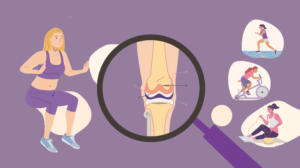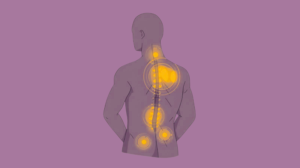Musculoskeletal pain, whether from arthritis, injury, inflammation, or chronic conditions- can significantly impair mobility and quality of life. What many people overlook is that diet plays a fundamental role in managing this type of pain. The right nutrients can help reduce inflammation, strengthen muscles, fortify bones, and lubricate joints. In this guide, we explore science-backed nutrition tips to help relieve pain and improve your musculoskeletal health.
Understanding the Connection Between Nutrition and Pain Relief
Pain is often a signal of underlying inflammation, injury, or degeneration. Chronic inflammation, in particular, is a root cause of many conditions affecting the muscles, bones, and joints, such as osteoarthritis, rheumatoid arthritis, and fibromyalgia.
Nutrition helps address these issues by:
- Reducing systemic inflammation
- Providing raw materials for bone density and muscle growth
- Supporting cartilage and connective tissue repair
- Maintaining a healthy body weight reduces stress on joints
Let’s explore the essential nutrients and diet patterns that support musculoskeletal health.
Anti-Inflammatory Foods for Reducing Pain
Chronic inflammation is a significant contributor to joint and muscle pain. Fortunately, many foods contain natural compounds that help reduce inflammation and protect tissues.
a. Omega-3 Fatty Acids
Omega-3s are powerful anti-inflammatory fats found in:
- Fatty fish (salmon, sardines, mackerel)
- Flaxseeds
- Chia seeds
- Walnuts
Numerous studies have demonstrated that omega-3 fatty acids can help alleviate joint stiffness and pain, particularly in individuals with rheumatoid arthritis.
b. Colorful Fruits and Vegetables
These are rich in antioxidants like vitamin C, beta-carotene, and flavonoids that combat oxidative stress and reduce inflammation. Good choices include:
- Berries (blueberries, strawberries)
- Leafy greens (spinach, kale)
- Cruciferous vegetables (broccoli, Brussels sprouts)
- Bell peppers
- Tomatoes
c. Spices with Anti-Inflammatory Properties
Certain spices can also offer pain-relieving benefits:
- Turmeric (curcumin): Natural anti-inflammatory and antioxidant.
- Ginger: May reduce muscle pain and soreness.
- Cinnamon: Has antioxidant and anti-inflammatory effects.
Essential Nutrients for Muscle Support
Healthy muscles support joints, stabilize posture, and reduce the risk of injury. To support muscle function, your diet must include adequate protein and key micronutrients.
a. Protein
Protein is critical for muscle repair and regeneration. Include high-quality protein sources such as:
- Lean meats (chicken, turkey)
- Fish
- Eggs
- Greek yogurt
- Plant-based proteins (lentils, beans, tofu, quinoa)
A general guideline is to consume 0.8 to 1.2 grams of protein per kilogram of body weight daily, or more for active individuals.
b. Magnesium
Magnesium aids in muscle relaxation, energy production, and nerve function. Deficiency can lead to cramps and chronic muscle tension. Sources include:
- Pumpkin seeds
- Almonds
- Spinach
- Black beans
- Whole grains
c. Potassium
Potassium balances fluid in cells and prevents muscle cramps. Include:
- Bananas
- Sweet potatoes
- Avocados
- Coconut water
Bone-Strengthening Nutrients for Long-Term Relief
Healthy bones are essential for maintaining structure and protecting against fractures. With aging or inactivity, bone loss can increase pain risk. Proper nutrition can slow bone density loss and keep you active.
a. Calcium
Calcium is the building block of bones. Aim to get it from:
- Dairy products (milk, yogurt, cheese)
- Fortified plant-based milks
- Leafy greens (collards, kale)
- Almonds
b. Vitamin D
Vitamin D helps your body absorb calcium and supports immune function. You can get it from:
- Sun exposure
- Fatty fish
- Egg yolks
- Fortified foods
Vitamin D deficiency is linked with increased musculoskeletal pain and bone softening.
c. Vitamin K2
Vitamin K2 helps bind calcium to bones. Natural sources include:
- Natto (fermented soybeans)
- Hard cheeses
- Egg yolks
- Liver
Joint-Friendly Nutrients for Flexibility and Mobility
Joints are cushioned by cartilage and synovial fluid, both of which degrade over time or due to poor diet. Including nutrients that promote joint health is vital for long-term mobility.
a. Collagen and Gelatin
Collagen is a major component of cartilage, tendons, and ligaments. Collagen supplements and bone broth may support joint integrity.
b. Vitamin C
Vitamin C supports collagen synthesis and immune health. Rich sources include:
- Citrus fruits
- Strawberries
- Kiwi
- Peppers
c. Glucosamine and Chondroitin
These naturally occur in cartilage and may help reduce symptoms of joint pain. While more research is needed, they are widely used in supplements for osteoarthritis.
5. Hydration: Lubricating Your Joints and Muscles
Dehydration can lead to joint stiffness, poor muscle function, and cramps. Water helps maintain synovial fluid in joints and enables proper muscle contraction. Aim for:
- At least 8 glasses (2 liters) of water daily
- More if you’re physically active or live in hot climates
Include water-rich foods like cucumbers, watermelon, and oranges to stay hydrated.
Weight Management for Pain Prevention
Excess weight increases the mechanical load on your knees, hips, and lower back. Just 10 pounds of extra weight can put up to 40 pounds of extra pressure on the knees. Losing weight can:
- Reduce joint strain
- Improve posture
- Ease chronic pain conditions
Choosing nutrient-dense, whole foods over processed ones is key to long-term weight control.
Foods to Limit or Avoid
Certain foods may worsen inflammation and increase pain symptoms.
a. Added Sugars
Excess sugar can trigger inflammatory responses in the body. Limit:
- Sodas
- Baked goods
- Candy
b. Refined Carbohydrates
White bread, white rice, and other refined carbs can spike blood sugar and promote inflammation.
c. Trans Fats and Processed Meats
Linked to higher inflammation markers and pain sensitivity, avoid:
- Fried foods
- Packaged snacks
- Sausages, bacon, and deli meats
Functional Meal Planning Tips
To incorporate pain-relieving foods into your day, consider these planning tips:
- Breakfast: Oatmeal with chia seeds, berries, and walnuts.
- Lunch: Grilled salmon over spinach salad with olive oil and lemon dressing.
- Snack: Greek yogurt with turmeric and honey.
- Dinner: Stir-fry with tofu, bell peppers, and brown rice.
- Hydration: Herbal teas and plenty of water throughout the day.
Supplements for Pain Relief (Use with Caution)
Supplements can help bridge nutritional gaps but should not replace a healthy diet. Some commonly used ones include:
- Omega-3 fish oil
- Vitamin D3
- Magnesium glycinate
- Collagen peptides
- Glucosamine and chondroitin
Always consult your healthcare provider before starting any new supplement, especially if you take medications or have existing health conditions.
Lifestyle Habits That Complement Nutrition
Nutritional changes work best when paired with other healthy habits:
- Regular physical activity (low-impact like swimming, yoga, or walking)
- Stretching and strength exercises for posture and balance
- Good ergonomics while working or driving
- Stress management (chronic stress can worsen pain)
Together, these habits create a holistic approach to managing musculoskeletal discomfort.
Conclusion: Healing Starts on Your Plate
Chronic muscle, bone, or joint pain doesn’t always require pharmaceutical intervention. Often, the foundation of healing lies in what you eat daily. Anti-inflammatory foods, proper hydration, and bone- and muscle-supporting nutrients form a potent defense against pain.
By embracing a nutrition-forward lifestyle and making informed dietary choices, you not only reduce pain but also promote long-term mobility and quality of life. Start with one meal at a time—your body will thank you.
References
- Centers for Disease Control and Prevention. (2021). How much physical activity do adults need? https://www.cdc.gov/physicalactivity/basics/adults/index.htm
- American Physical Therapy Association. (2020). Posture and movement. https://www.choosept.com/guide/physical-therapy-guide-posture
- National Highway Traffic Safety Administration. (2021). Ergonomics while driving. https://www.nhtsa.gov/road-safety
- American Academy of Orthopaedic Surgeons. (2020). Driving posture tips. https://orthoinfo.aaos.org/en/staying-healthy/healthy-driving-posture
- Canadian Centre for Occupational Health and Safety. (2020). Safe lifting practices. https://www.ccohs.ca/oshanswers/ergonomics/liftingsafely.html
- Occupational Safety and Health Administration. (2020). Ergonomics: Solutions to control hazards. https://www.osha.gov/ergonomics
- National Institute of Arthritis and Musculoskeletal and Skin Diseases. (2020). Joint pain. https://www.niams.nih.gov/health-topics/joint-pain
- Mayo Clinic. (2021). Office ergonomics: Your how-to guide. https://www.mayoclinic.org/healthy-lifestyle/adult-health/in-depth/office-ergonomics/art-20046169























